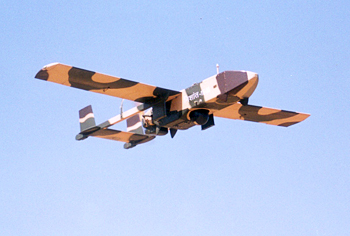INDIAN ARMED FORCES CHIEFS ON OUR RELENTLESS AND FOCUSED PUBLISHING EFFORTS

The insightful articles, inspiring narrations and analytical perspectives presented by the Editorial Team, establish an alluring connect with the reader. My compliments and best wishes to SP Guide Publications.

"Over the past 60 years, the growth of SP Guide Publications has mirrored the rising stature of Indian Navy. Its well-researched and informative magazines on Defence and Aerospace sector have served to shape an educated opinion of our military personnel, policy makers and the public alike. I wish SP's Publication team continued success, fair winds and following seas in all future endeavour!"

Since, its inception in 1964, SP Guide Publications has consistently demonstrated commitment to high-quality journalism in the aerospace and defence sectors, earning a well-deserved reputation as Asia's largest media house in this domain. I wish SP Guide Publications continued success in its pursuit of excellence.
Nishant Dumped Finally when will we privatise?
 |
By Lt. General P.C. Katoch Former Director General of Information Systems, Indian Army |

Photo Credit: DRDO
Yet another failed crash landing of DRDO’s Nishant UAV shows the dismal state of the governmental defence-industrial complex. To meet the Army’s needs for intelligence gathering over enemy territory, as also for reconnaissance, training, surveillance, target designation, artillery fire correction, damage assessment, ELINT and SIGINT, it was decided in September 1988 that the DRDO would undertake the indigenous development of its UAV. The GSQR was finalized by the Army in May 1990 and the Nishant UAV attempted its first test flight in 1995.
But 20 years later and having spent some 90 crores on the project, periodic crash landings of Nishant have again brought into focus the gross lack of accountability of DRDO and its inability to meet military requirements with successive CAG reports highlighting endemic corruption in the organization. As per media reports, the two decade old 90 crores Nishant UAV program has proved a “DUD”, with the Indian Army shelving the system and cancelling any further orders after three of the four systems supplied by the DRDO. The media further says that the DRDO had actually overspent 5 crores in the vain hope of recovering the project it actually means 20 years plus 95 crores down the drain, leave aside keeping the Army deficient all these years of an indigenous UAV that was meant to be the eyes and ears of the Army, providing high definition images of battlefield, help designate targets, and provide electronic and signal intelligence information.
The 380 kg Nishant UAV is planned for endurance of four hours and thirty minutes, required rail-launching from a hydro-pneumatic launcher and is able to be recovered by a parachute system. The Mobile Hydro-Pneumatic Launcher (MHPL) system mounted on a Tatra truck weighs 14,000 kg and a life cycle of 1000 launches before requiring overhaul. DRDO boasted that Nishant is one of the few UAVs in the world in its weight-class capable of being catapult-launched and recovered by using parachute, thus eliminating the need for a runway as in the case of conventional take-off and landing with wheels. As always happens, with DRDO’s governmental clout, many a times imperfect equipment and systems gets dumped into the military on the excuse that so much money has already been spent. But the Army has had enough with Nishant UAV with the latest crash bringing all the four introduced into service to the same fate. Significantly, each of these drones had cost the Army 22 crore. Introduced into service in 2011, the last of the four Nishants in service with the Army crashed near the Pokhran range in Rajasthan. According to Army sources the crash was because of a technical glitch. Just 15 days back, another Nishant had gone down, also for a technical reason. Earlier in April, two other Nishant drones had crash landed near the India-Pakistan border near Jaisalmer. For their part, the DRDO in its usual manner has blamed the user for poor handling of the system, a point categorically denied by the Army. The irony is that this game has been gone on for decades with no one held accountable in the DRDO. In recent months, the issue of DRDO spending 5 crores of government funds for crafting a silver chariot for Rath Yatra even had come up in Parliament. Very significantly, a smaller drone named Nethra developed by IIT graduates has been in use with police, para-military forces and the National Disaster Relief Force. Perhaps a private company could have easily developed a better UAV for the Army in just 2-3 years, given the fact that many indigenous companies have been marketing drones and even camcopters. The irony here is that while this monolith of DRDO cannot produce a worthwhile drone in 20 years, Pakistan has already developed and deployed its own armed drone.
The government needs to seriously reflect at this dire state of development not only to pull up DRDO, but also to usher accountability and even stop its false propaganda in media of achievements that are quite imperfect. One example is the Akash AD system that DRDO has been bragging about. Commenced in 1980’s, it was supposed to replace the vintage Kvadrat system for providing AD cover during mechanized maneuvers. It failed during Army trials in early 2000 and so was dumped on the IAF because it worked in ‘static’ mode. Now three regiments worth of Akash are being inducted into the Army post massive media blitz that this is an “improved version”. One regiment has already having been raised but the stark reality is that the Army is forced to still use this “improved version” of Akash in ‘static’ role. DRDO has already been developing a wheeled version of Nishant, termed Panchi. Hope another schoolboy level imperfect DRDO invention doesn’t get dumped on the Army again just because DRDO spent money. How long are we going to permit DRDO to fool the nation?





